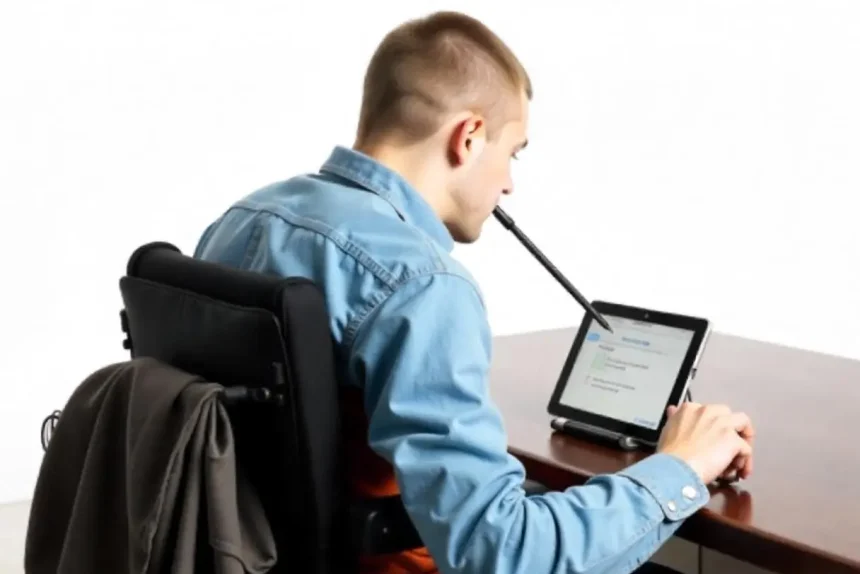Explore innovative assistive technology devices designed to enhance the independence and functionality of wheelchair users. Our detailed guide provides insight into various assistive technology examples, their applications, and the populations that benefit from them.
Understanding Assistive Technology Devices
Assistive technology devices are tools designed to aid individuals with disabilities in performing tasks that might otherwise be difficult or impossible.
- Devices such as head controls, head pointers, and dual-handed keyboards offer alternatives to traditional input methods.
- These devices cater to a range of conditions, from cerebral palsy to spinal cord injuries.
The Role of Sip and Puff Assistive Technology
Sip and puff assistive technology enables individuals with severe mobility impairments to control devices using breath inputs. A notable example is the sip and puff switch, which allows users to manipulate their wheelchairs or computers with ease.
This technology is crucial for those with quadriplegia due to spinal cord injuries or advanced amyotrophic lateral sclerosis (ALS).
Exploring Sip and Puff Switch for Wheelchairs
The sip and puff switch is a versatile tool used in wheelchairs and other devices, characterized by its functionality—allowing control through sip and puff actions on a straw-like interface.
Real-World Scenarios and Case Studies
Real-world scenarios highlight the impact of assistive technology on daily life:
- A man with a C3 spinal cord injury uses a sip n puff interface to operate his computer efficiently.
- A high school student with learning disabilities uses a reading pen to aid in understanding complex material.
Assistive Technology Examples: Head Pointer and Track Ball
The head pointer and track ball are essential assistive devices facilitating tasks for individuals with limited hand control. These devices are particularly useful in adaptive educational and occupational settings.
Interactive Learning: Questions and Activities
Engage with interactive questions:
- Identify the key differences between sip and puff devices versus other assistive technologies.
- Discuss the benefits of using a sip n puff wheelchair versus traditional mobility aids.
Want detailed practice tips to ace the NBCOT® exam? Join now for full access!
What are assistive technology devices for wheelchair users?
Assistive technology devices for wheelchair users include tools like sip and puff systems, head controls, and dual-handed keyboards designed to enhance independence and improve the functionality of individuals with mobility impairments.
How does sip and puff assistive technology work?
Sip and puff assistive technology enables users to control devices through breath inputs. It uses a straw-like interface, allowing individuals with severe mobility impairments or conditions like quadriplegia to operate wheelchairs and computers through sips and puffs.
Who can benefit from using a sip and puff wheelchair?
Individuals with quadriplegia, those with spinal cord injuries, and persons with advanced amyotrophic lateral sclerosis (ALS) are among those who can greatly benefit from using a sip and puff wheelchair as it provides an effective means of independent mobility.
What are the differences between head pointers and track balls?
Head pointers and track balls are assistive devices for individuals with limited hand control. A head pointer allows navigation and selection tasks via head movements, while a track ball serves as an alternative to a traditional mouse, facilitating easier movement and clicking actions.
How can assistive technology enhance learning for individuals with disabilities?
Assistive technology, like reading pens for students with learning disabilities, aids in understanding complex material by providing visual and auditory support, thus improving educational outcomes and maintaining engagement in adaptive settings.



